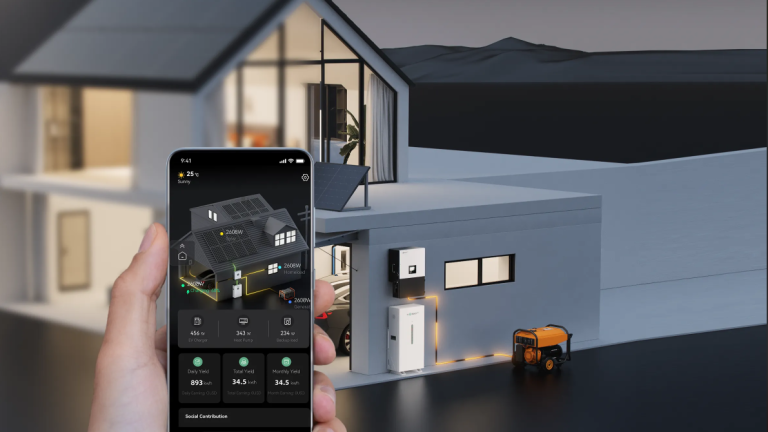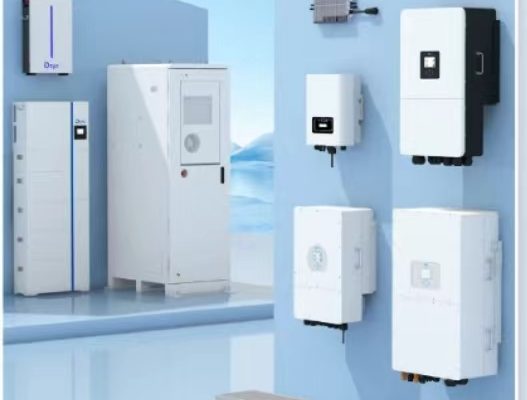As energy storage adoption grows in residential, commercial, and industrial applications, one critical decision buyers face is how to mount the system: rack-mounted vs. wall-mounted ESS. This choice affects space utilization, thermal management, scalability, installation cost, and maintenance.
This article explores the advantages, limitations, and best-use cases of rack-mounted and wall-mounted ESS, helping installers, distributors, and end users make informed decisions.
1. Understanding ESS Mounting Types
1.1 Wall-Mounted ESS
- Compact units installed directly on walls
- Typically used for residential or small commercial applications
- Components are integrated: battery modules, hybrid inverter, and sometimes monitoring systems
Key Characteristics:
- Lightweight, sleek design
- Easy installation with minimal floor space
- Limited expansion unless multiple units are stacked
1.2 Rack-Mounted ESS
- Battery modules and inverters installed on floor-standing racks
- Common in commercial, industrial, and containerized systems
- Can include modular battery racks, PCS, AC/DC distribution, and cooling systems
Key Characteristics:
- Scalable and modular
- Better airflow and thermal management
- Supports higher power and energy capacities
2. Space and Footprint Considerations
| Feature | Wall-Mounted | Rack-Mounted |
|---|---|---|
| Floor Space | Minimal | Requires dedicated floor area |
| Wall Space | Needs solid wall | N/A |
| Volume Efficiency | Good for small capacity | Optimized for larger capacities |
| Multiple Units | Limited stacking | Multiple racks side by side |
Recommendation:
- Small homes / offices: Wall-mounted
- Large commercial buildings / factories: Rack-mounted
3. Capacity and Scalability
3.1 Wall-Mounted Systems
- Typically 5–20 kWh per unit
- Expansion requires additional wall units
- Limited to single-phase or small three-phase inverters
3.2 Rack-Mounted Systems
- Can range from 50 kWh to several MWh
- Supports modular battery racks and multiple parallel inverters
- Can scale up by adding more racks without redesigning the system
⚡ Tip: For growing businesses or facilities expecting future load increase, rack-mounted ESS is preferred.
4. Installation and Labor Costs
| Aspect | Wall-Mounted | Rack-Mounted |
|---|---|---|
| Installation Time | 1–2 hours per unit | 1–3 days for multi-rack systems |
| Labor Complexity | Low | Higher (requires skilled labor for wiring, grounding, and thermal management) |
| Mounting Hardware | Brackets, screws | Floor racks, bolts, leveling |
Observation:
Wall-mounted systems have lower upfront installation cost, but rack-mounted systems offer long-term efficiency and expandability.
5. Thermal Management and Safety
| Factor | Wall-Mounted | Rack-Mounted |
|---|---|---|
| Heat Dissipation | Natural convection, small fans | Forced-air cooling, liquid cooling options |
| Overheating Risk | Higher if multiple units stacked | Lower due to modular racks and airflow design |
| Fire Safety | Must comply with UL/IEC standards; compact design may limit spacing | Easier to implement fire barriers and sensors in large-scale racks |
🔥 Tip: For high-capacity commercial ESS, racks provide better thermal control, improving battery longevity and reliability.
6. Maintenance and Serviceability
6.1 Wall-Mounted
- Accessible for residential technicians
- Replacing a battery or inverter is simple but may require temporary power shutdown
- Limited monitoring ports
6.2 Rack-Mounted
- Designed for industrial maintenance protocols
- Hot-swappable battery modules in many cases
- Centralized monitoring via EMS for multiple racks
- Easier to upgrade in modular fashion
🛠 Tip: Rack-mounted ESS is preferred in commercial/industrial settings with frequent maintenance or module replacements.
7. Integration with Existing Infrastructure
| Consideration | Wall-Mounted | Rack-Mounted |
|---|---|---|
| Single-Phase Homes | Perfect match | Overkill |
| Three-Phase Commercial | Limited capacity | Ideal for multiple inverters and high loads |
| PV Coupling | Easy for small PV arrays | Can handle large-scale PV + ESS integration |
| Grid Interaction | Small-scale feed-in | Supports net-metering, peak shaving, and demand response |
8. Cost Comparison
| Item | Wall-Mounted | Rack-Mounted |
|---|---|---|
| Unit Cost | $3,000–$7,000 | $20,000–$100,000+ (depending on size) |
| Installation Cost | $500–$1,000 | $3,000–$10,000 |
| Scalability Cost | High (add multiple units) | Low (expand within racks) |
| Maintenance Cost | Moderate | Optimized with EMS |
⚠️ Observation: While wall-mounted ESS is cheaper upfront, rack-mounted ESS can provide better long-term ROI for commercial users.
9. Use Cases
Wall-Mounted ESS
- Residential homes and small offices
- Backup for critical appliances
- Limited PV or generator input
- Small rural sites
Rack-Mounted ESS
- Industrial or commercial facilities
- Data centers and telecom towers
- PV + storage microgrids
- Modular, high-capacity energy storage installations
10. Environmental and Site Considerations
- Wall-Mounted:
- Indoor installation preferred (temperature control)
- Limited tolerance for dust, moisture, or outdoor conditions
- Rack-Mounted:
- Can be indoor or containerized outdoors
- Supports IP65 cabinets, forced-air or liquid cooling
- Easy to implement environmental monitoring and safety protocols
11. Decision-Making Checklist
Ask these questions before choosing mounting type:
- What is the total energy requirement (kWh) and peak load (kW)?
- Is future expansion expected?
- What is the installation space available? Wall or floor?
- Are thermal and safety management considerations critical?
- Who will perform maintenance, and how often?
- Budget for initial installation vs. long-term ROI?
- Do you need integration with PV, generator, or EMS?
✅ If the answer leans toward small, fixed loads, and limited expansion → Wall-Mounted
✅ For high capacity, modular, or expandable systems → Rack-Mounted
12. Future Trends in ESS Mounting
- Hybrid Designs: Wall-mounted for homes, with optional modular rack add-ons for future expansion
- Containerized Systems: Standardized racks in shipping containers for quick deployment
- Smart EMS Integration: Central monitoring regardless of mounting style
- Pre-Wired Cabinets: Reducing on-site wiring errors and installation time
Choosing between rack-mounted and wall-mounted ESS depends on multiple factors:
- Capacity and scalability
- Space and site constraints
- Thermal management and safety
- Installation and maintenance convenience
- Long-term ROI
✅ Key Takeaways:
- Wall-mounted ESS: compact, easy to install, perfect for residential and small commercial
- Rack-mounted ESS: scalable, modular, better thermal management, ideal for commercial and industrial sites
- Consider future load growth, maintenance access, and integration with PV or generator systems
By carefully evaluating these factors, buyers can select the mounting type that optimizes performance, safety, and long-term value.









